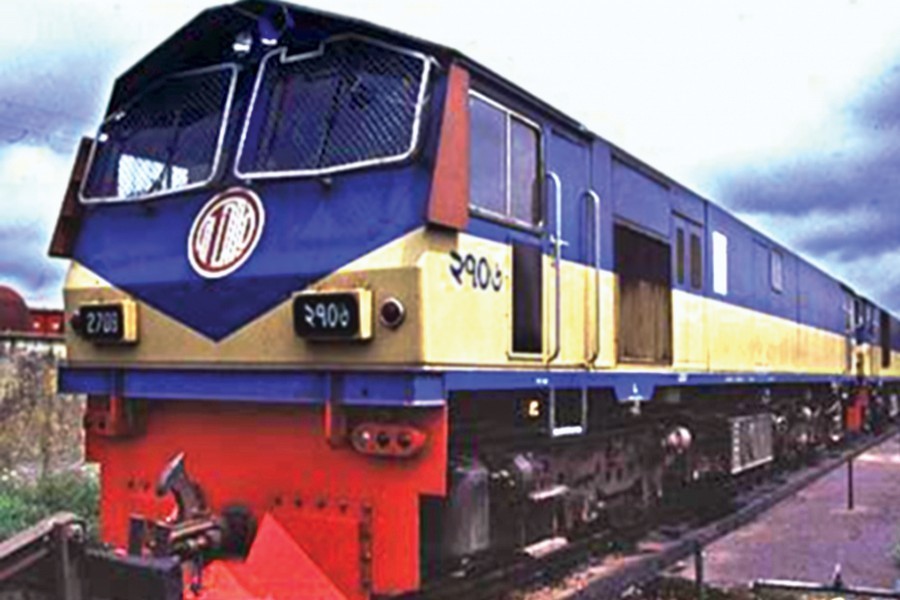Railway is a popular mass transportation system in the world with its origin in the 19th century. It has proved to be both passenger and environment-friendly -- especially suitable for mass transportation. But when the railway services are being modernised in almost all countries of the world including our neighbours, unfortunately the reverse has been happening in Bangladesh since the 1980s. This has mainly occurred due to attaching top priority to road transportation in the communication sector as well as massive influence-peddling by the road transport lobbies during the rule of successive governments. With the lone exception of Bangladesh, there is no other instance where alternative transports were pressed into service by closing down the railway services. It is alleged that local politics are involved in the expansion of road transport network, which now criss-crosses the country like a spider's web. This is happening because there is too much scope for making money by indulging in corruption through construction or infrastructure projects.
Railway communication in Bangladesh territory was started on November 15, 1862 by the British colonial government over a 53 kilometre-long broad-gauge line extending from Darshana in Chuadanga district to Jagoti of Kushtia district. A 14.98 kilometre-long meter-gauge line was then inaugurated on January 4 1885. Two sections of metre-gauge lines were opened on July 1, 1895 connecting Chattagram with Cumilla (149.9 kilometres), and Laksam with Chandpur (50.9 kilometres). The Bengal Assam Railway was established with the assistance of the colonial government, which was later run by the Bengal Assam Railway Company.
At the time of partition of the Indian subcontinent in 1947, the Bengal Assam Railway was divided into two segments. The 2,604 kilometre long railway tracks located in East Bengal came under the purview of the central government of Pakistan. The Eastern Bengal Railway was renamed as Pakistan Eastern Railway in 1961. Then in 1962, Pakistan Eastern Railway was transferred to the provincial government of East Pakistan and its management was taken over by a railway board. The entity assumed the name of the 'Bangladesh Railway' after the country's independence in 1971, and it continued to be governed by a railway board until 1982. From that year, it was placed under the Railway Division of the Ministry of Communications, where the Director General of the railway was also the Secretary of the Railway Division in the Ministry of Communication. Subsequently, the day-to-day operation of the railway was separated from the Railway Division on August 12, 1995 and a director general drawn from the railway professionals was made its chief executive. Finally, the Railway Division was upgraded into a separate Ministry of Railway by the present government on December 4, 2011 with the objective of making railway services more reliable, economic, environment-friendly, punctual and pro-people. The railway tracks of the Bangladesh Railway now extend over a length of 2,877 kilometres, and the entity employs a total of 25,083 regular employees.
However, as reported by the media in recent times, around 35 per cent of the sanctioned manpower of the state-owned Bangladesh Railway remains vacant at the moment. Of the 14,000 vacant posts, an astonishing 13,000 are technical ones. Around 70 railway stations have been shut down by the public sector monopoly entity recently due to shortage of manpower. All these have resulted in down-gradation of service quality, problems in traffic management leading to frequent accidents, as well as routine failures in maintaining train schedules. According to railway statistics, over 3,000 incidents of train derailment have taken place in the country since 2008. There have been 29 incidents of head-to-head collisions and 96 cases of wrong signalling during the past 10 years. Besides, innumerable instances of delinking of compartments and accidents on railway crossings have occurred. A total of 277 passengers died due to these accidents, although the death figure for level crossings is much higher.
A train can carry passengers many times more than a bus does. Besides, there is no traffic jam on its way, although traffic jams have become permanent and chronic on all roads and highways of the country. The railway lines do not require much space and can last for long periods with negligible maintenance cost. Railway services also generate employment opportunities on a massive scale both within and outside the network. It may be noted that the current figure of 350 trains run by the Bangladesh Railway across the country for a nation of 160 million is ludicrously inadequate. Sadly, many train services in operation even during the British colonial era have been shut down. The Feni-Bilonia train service is a case in point, which could have been highly useful in expanding trade with the north-eastern states of India. Another example is the yet-to-be constructed Sirajganj-Bogra railway line, which could have reduced the distance between Dhaka and the northern region of Bogra-Rangpur-Dinajpur by 150 kilometres.
It may be recalled that the railway services have been neglected in the country particularly since the 1980s against the backdrop of continuous losses incurred by the Bangladesh Railway owing to mismanagement. But instead of focusing on improving the railway management, the government undertook golden handshake programme in the state-owned organisation in the next decade on recommendation by the World Bank, IMF and Asian Development Bank. Most of these railway retirees were technical personnel, and their departure has been the main reason for this dismal state of affair in the current railway services.
Establishment of a separate Railway Ministry in 2011 was a laudable initiative of the present government. There have been massive investments in the sector during the past few years mainly through procurement of foreign loans. At present, over Taka 90 billion is being spent in 48 ongoing projects and new machinery and hardware including coaches and engines are being purchased. But the dearth of manpower in the Bangladesh Railway is putting everything into jeopardy. It is high time that the government paid more attention to fixing the software like manpower in the sector instead of merely piling up the hardware.


